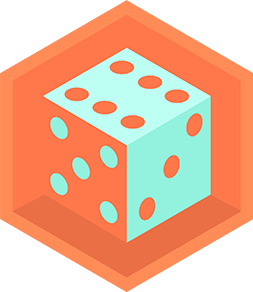Share Your Game Idea!
Design a simple board or backyard game, create a paper prototype with rules, test it with friends, and collect feedback for improvements.



Step-by-step guide to Share Your Game Idea!
Step 1
Pick a fun theme for your game and decide how a player wins
Step 2
Choose how many players can play and how each player will take a turn
Step 3
Draw a simple board layout with start and finish areas on one sheet of paper
Step 4
Add special spaces on the board and write a short rule for what each special space does
Step 5
Design and draw player pieces on paper or choose small tokens to use as pieces
Step 6
Decide whether you will use a dice or a spinner and prepare it for play
Step 7
Write a one-page rule sheet that explains setup turn order and how to win
Step 8
Cut out and tape any separate parts to assemble your paper prototype board
Step 9
Colour and decorate the board and pieces so they are easy to read and fun to look at
Step 10
Invite friends or family to playtest your game with you
Step 11
Run one full playtest following only the rules you wrote so you can see how they work
Step 12
Ask each player three short questions about what they liked what was confusing and one idea to improve and write down their answers
Step 13
Make at least one change to your board or rules based on the feedback you collected
Step 14
Share a photo and a short description of your finished game on DIY.org
Final steps
You're almost there! Complete all the steps, bring your creation to life, post it, and conquer the challenge!


Help!?
What can we use if we don't have a dice, spinner, or small tokens mentioned in the instructions?
If you don't have a dice or spinner from the step "Decide whether you will use a dice or a spinner and prepare it for play", use numbered playing cards flipped to determine moves or make a paperclip-and-pencil spinner, and substitute buttons, coins, or bottle caps for player pieces while taping paper parts together as described in "Cut out and tape any separate parts to assemble your paper prototype board".
What should we do if the game breaks during the first playtest or players get confused by special spaces?
During the step "Run one full playtest following only the rules you wrote", mark which special spaces from "Add special spaces on the board and write a short rule" caused confusion, then simplify those rules, add clear icons or example turns to your one-page rule sheet, and retry the playtest to check the outcome.
How can we change the activity for younger kids or older kids?
For younger kids simplify the board layout by drawing fewer spaces and using picture-only special-space rules and shorter playtests, while older kids can increase players, add a scoring system in the one-page rule sheet, and design more strategic special spaces as part of improving the prototype.
How can we make our finished game more special before sharing it on DIY.org?
Before you "Share a photo and a short description of your finished game on DIY.org", personalize the project by adding colored artwork and labels from "Colour and decorate the board and pieces", create printable rule cards, and take a photo of a laminated or taped prototype after the change you made from feedback.
Watch videos on how to Share Your Game Idea!
How to Make Your Own Board Game for Kids
Facts about game design for kids
✂️ Paper prototypes can be made with just paper, scissors, and pencils — they cost pennies and let you try ideas fast.
🌳 Backyard games like capture the flag and cornhole show how simple rules can create hours of active, social fun.
🧩 Many famous board games started as handmade paper or cardboard prototypes before becoming polished products.
🧠 Playtesting often uncovers clever player strategies designers never imagined, so testing with friends is essential.
🎲 Senet, an ancient Egyptian board game, is over 5,000 years old — one of the earliest known board games.
How do I run the "Share Your Game Idea!" activity with my child?
What materials do I need to create a paper prototype and test a game?
What ages is the "Share Your Game Idea!" activity suitable for?
What are the benefits of designing and playtesting games with kids?


One subscription, many ways to play and learn.
Only $6.99 after trial. No credit card required



